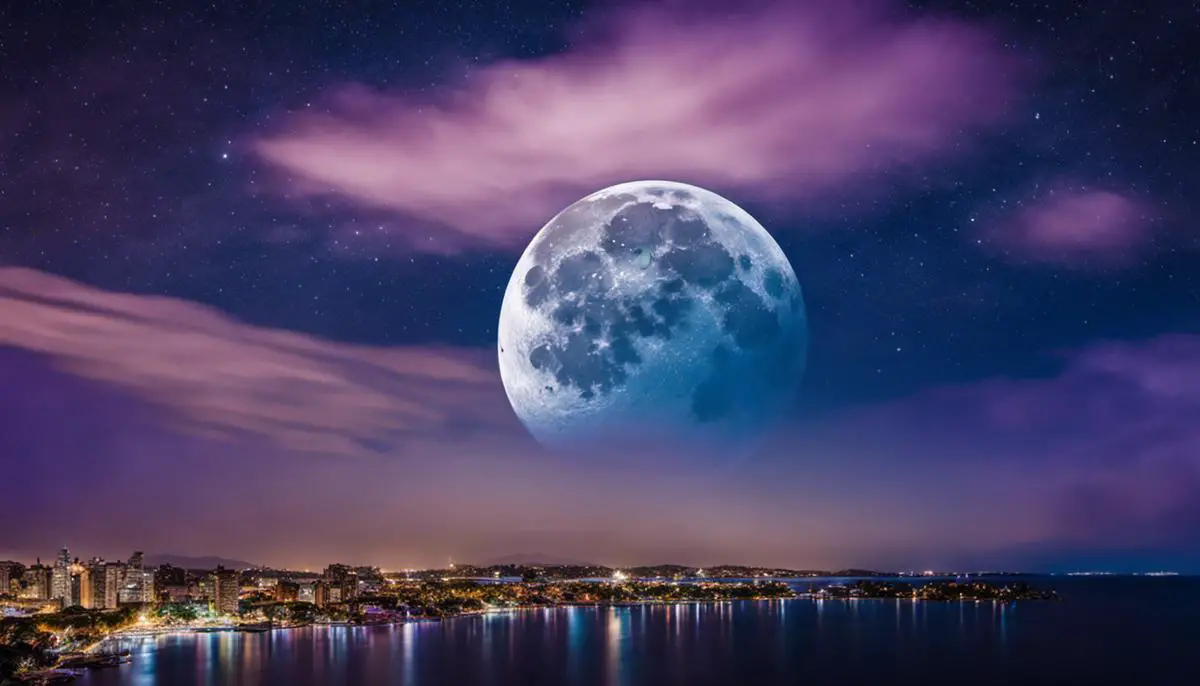The celestial phenomena that captivate our gazes and ignite our imaginations often hold more than just their visual splendor. One such spectacle is the rare Blue Moon that appears in our night sky, intriguing not only astronomers but also the ordinary observer for countless centuries. This essay elucidates on the fascinating concept of the Blue Moon, its historical significance, its influence on our calendar systems, and its scientific value. Additionally, it provides a detailed overview of the forthcoming Blue Moon event in October 2023, ushering you into a deeper understanding of its cultural and global interpretations as well as its consignment in popular myths and folklore.
Understanding The Concept of Blue Moon
Definition and History of ‘Blue Moon’
The term ‘Blue Moon’ is used within the field of astronomy to denote the occurrence of an unusual lunar event beyond the typical monthly cycle. The phrase hails from an Old English term ‘belewe moon’, where ‘belewe’ meant ‘to betray’. This term was used to refer to the “betrayer moon” or an additional moon that popped up in the season and betrayed the usual count of three moons per season.
However, in more contemporary usage, ‘Blue Moon’ has two definitions. The first refers to the occurrence of a second full moon within the span of a single calendar month. This is a fairly rare occurrence, hence the common saying “once in a blue moon” to illustrate an infrequent event. The second definition is based on the astronomical season, referring to the third full moon in an astronomical season that has four full moons. Traditionally, each season only has three full moons – one each for the beginning, middle, and end. When a season has four full moons, the third is known as the Blue Moon.
Why Is It Called a ‘Blue Moon’?
Despite the color implicated by its name, a Blue Moon does not involve an actual change in the moon’s color. The name is derived from the now antiquated meaning of ‘blue’ which is ‘betrayer’. It should be noted that in very rare circumstances, particles from volcanic eruptions or large fires can scatter light particles in the atmosphere and cause the moon to appear blue to the naked eye. However, this phenomenon is unrelated to the term ‘Blue Moon’ indicating a second full moon in a month or a third full moon in a season with four full moons.
The Upcoming Blue Moon in October 2023 Explained
When looking ahead at significant lunar events, one that stands out is the Blue Moon occurring in October 2023. This Blue Moon is defined by the unusual occurrence of being the third full moon in a season that experiences four full moons, rather than the average three. To provide specifics, the autumn season of 2023 will span from the September equinox to the December solstice, and during this period, four full moons will appear. The third, scheduled for October 23, 2023, has earned the title of the Blue Moon. Despite its intriguing name, the Blue Moon will not physically appear blue nor will it be larger than the standard full moon. Instead, it upholds its rarity due to its atypical position within the seasonal or monthly lunar cycle.
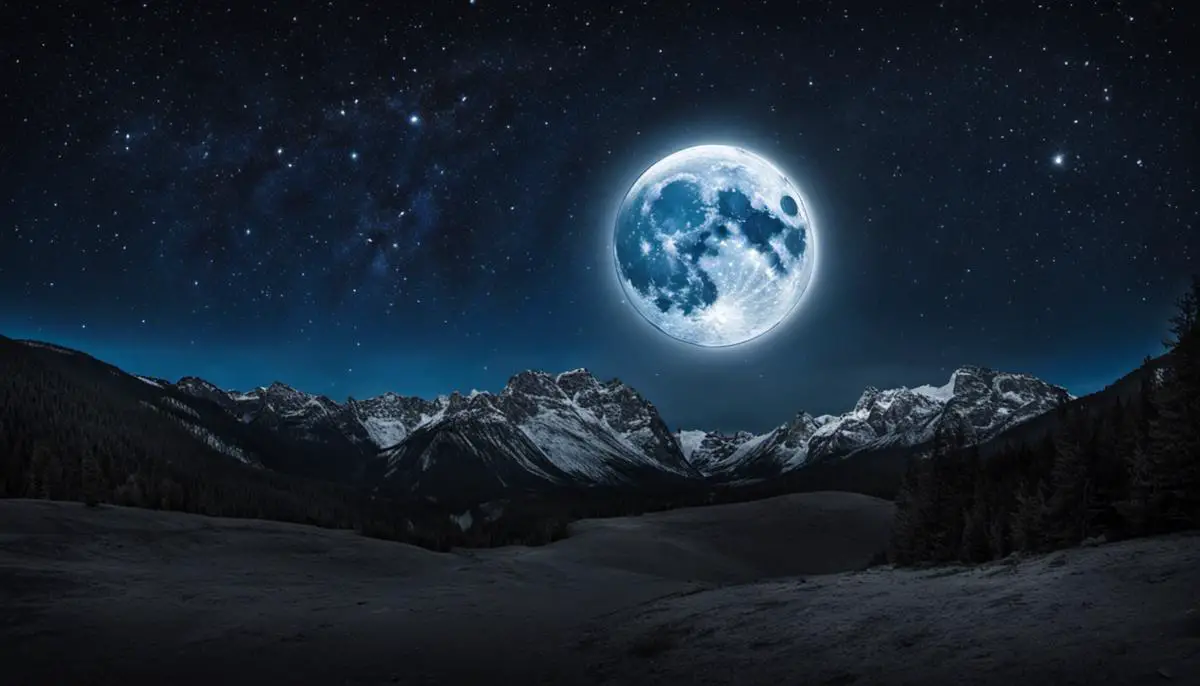
Phases of Moon and Calendar Implications
Deciphering the Lunar Cycle
How exactly do these lunar phases work? The answer lies in the Moon’s orbit around the Earth, which takes roughly 28 days to complete. As it circles our planet, the Moon shifts its position relative to the Sun and Earth, resulting in varying light conditions that produce distinct phases. These phases, as observed from Earth, include the New Moon, Waxing Crescent, First Quarter, Waxing Gibbous, Full Moon, Waning Gibbous, Third Quarter (also known as the Last Quarter), and Waning Crescent. After the Waning Crescent, the cycle resumes, once again starting with the New Moon. Understanding the Moon’s cycle aids in making sense of rare events like the Blue Moon in October 2023.
Calendar Year vs Lunar Year
Our calendar, known as the Gregorian calendar, is primarily based on the Earth’s orbit around the Sun, comprising roughly 365.25 days – slightly more than the 12 lunar cycles (subtracting around 11 days), hence it is called a Solar year. This discrepancy between the lunar year and the Solar year is why we occasionally see two full moons in one calendar month, leading to the occurrence commonly referred to as the Blue Moon.
Understanding the Blue Moon Phenomenon
The phrase “blue moon” is used to describe the occurrence of two full moons within one calendar month. This phenomenon happens about once every 2.5 to 3 years on average due to the misalignment between our calendar months and the lunar cycle. Since the lunar cycle is approximately 28 days and most months in our calendar have more than 28 days, it allows for two full moons to show up within the same month.
Blue Moon October 2023
In October 2023, a Blue Moon is expected to happen. This is due to the calendar set up and the phases of the moon. The first full moon of the month is set to happen on October 1st, 2023. Then, in the same month, the second full moon or the ‘Blue Moon’ will occur on October 31st, 2023.
However, it’s important to note that despite the name, a Blue Moon does not mean the Moon will appear blue. The color of the Moon will not change. The term Blue Moon simply refers to the rarity of the occasion, harking back to the old saying “once in a blue moon”.
Astrophiles and casual sky gazers alike are in for a special treat with the Blue Moon occurring in October 2023. But remember, the chance to witness this incredible lunar event ultimately depends on where you’re situated on the globe, along with the specific weather conditions on the night of the spectacle.

Astronomical Significance of Blue Moon
Deciphering the ‘Blue Moon’ Mystery
For those who may be wondering, the term Blue Moon refers to the unusual event of two full moons appearing in the same calendar month. This scarce phenomenon is roughly a biennial occurrence, leading to the popular phrase ‘once in a blue moon’ indicating the rarity of something. The moon doesn’t actually take on a blue color, it’s just an old lore that bestowed the moniker upon it. However, under specific atmospheric circumstances, like in the aftermath of a volcanic eruption or a widespread forest fire that release abundant smoke and dust particles into the sky, the Moon might give off a slight blue hue.
Blue Moon October 2023 and Astronomical Importance
The Blue Moon in October 2023, similar to other Blue Moons, holds significance among astronomers due to its rarity. Astronomers and lunar scientists use these phenomena to study variations in the moon’s surface, satellite geology, and the effects of lunar cycles on our planet. Additionally, the occurrence of a Blue Moon also provides opportunities to chart the moon’s trajectory and changes to its topography over time.
The Influence on Lunar Science
The occurrence of a Blue Moon impacts lunar science as it offers a chance to gather additional data within the same lunar cycle. Observing two full moons in a month with relatively similar positions relative to Earth provides insights into the Moon’s orbit and rotation. Scientists also utilize the bright light of a full moon, such as a blue moon, for detailed studies of moon’s surface features and phenomena—ranging from crater analysis to identifying shifts in the lunar regolith.
Interesting Facts About Blue Moons
There are a few intriguing facts about Blue Moons that add to their intrigue. A blue moon isn’t always the second full moon of a month but can also be the third of four full moons in a particular season, this is known as a seasonal Blue Moon. Amazingly, the moon can sometimes appear blue in color due to particles in the Earth’s atmosphere. For instance, after the 1883 eruption of Krakatoa in Indonesia, the moon appeared blue for nearly two years.
Astronomical Events Coinciding with the Blue Moon
During the period of a Blue Moon, unique circumstances can align to render other astronomical phenomena visible. A stark example of this alignment is the Blue Moon scheduled to grace our skies in October 2023, as it will surface just after the Orionids meteor shower peak. Orionids is a meteor shower resulting from the trail of the well-known Halley’s Comet. The convergence of these phenomena could convert October 2023 into a captivating month best suited for stargazers and avid astronomical adventurers.
Furthermore, certain lunar phenomena like lunar libration become more observable during a Blue Moon. This wobbling effect permits viewers from Earth to glimpse up to 59% of the moon’s surface over a certain period, instead of the usual 50%. Other effects, such as moon illusions that make the moon seem larger at the horizon than at its zenith, can also be more noticeable during a Blue Moon.
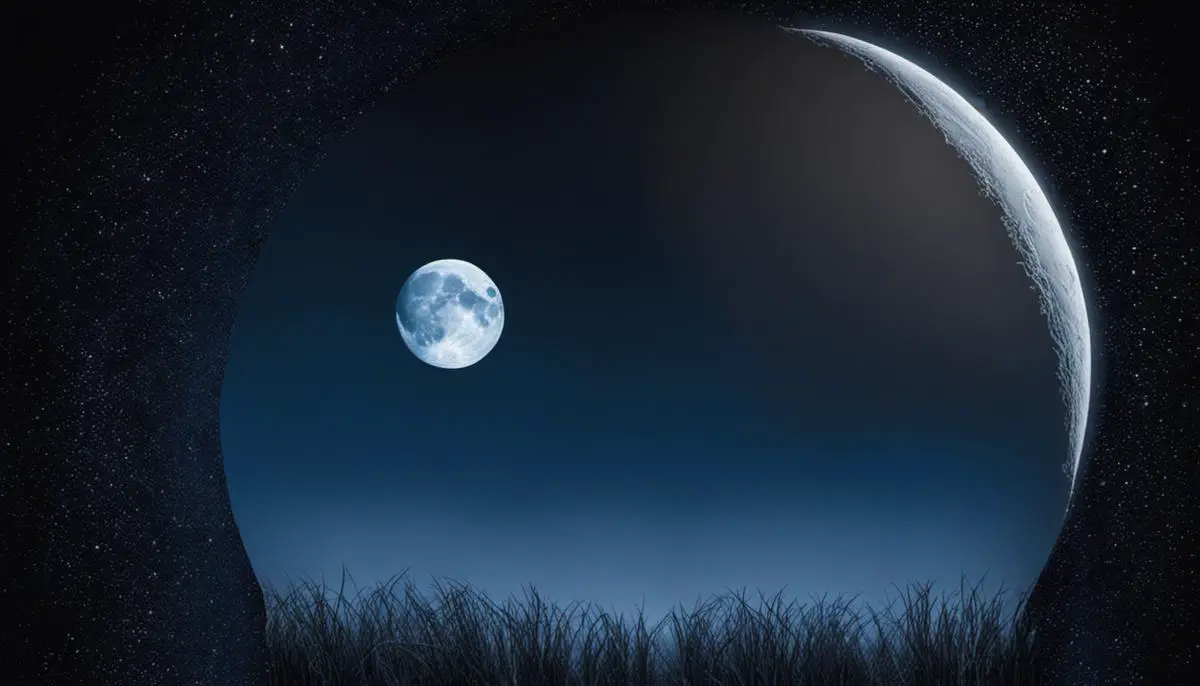
Blue Moon October 2023: What to Expect
Details of the October 2023 Blue Moon
“Blue Moon” is a term that has often been affiliated with unusual occurrences since full moons generally only happen once a month. When a month presents us with a second full moon, we christen it a “Blue Moon”. However, the October 2023 Blue Moon presents an exception to this rule. Rather than being an extra full moon in one calendar month, this one is referred to by astronomers as a seasonal Blue Moon. It is considered the third out of a series of four full moons occurring in a single season, i.e., in the period that extends from a solstice to an equinox.
Observing the Blue Moon
The sight of a full Blue Moon is spectacular to behold. Depending on your location, the best time to view the Blue Moon in October 2023 would be after moonrise when it is just getting dark and the moon is positioned close to the horizon. The moonrise and moonset times vary depending on your geographical location, so it would be best to check a local astronomical guide or website for precise timing.
Frequency of Blue Moons
There is a varied frequency of Blue Moons due to the misalignment of our calendar months with the lunar cycle. On average, a Blue Moon occurs every 2.5 years. The Moon completes its cycle, from full moon to full moon, every 29.5 days. However, our calendar months (most of which are 30 or 31 days, February being the exception) are slightly longer than a lunar cycle, which allows for the occasional occurrence of two full moons in one month. The concept of a seasonal Blue Moon, on the other hand, happens every two to three years because it’s time-bound to a specific season rather than a single month.
The Next Blue Moon
Once the Blue Moon occurs in October 2023, stargazers and moon enthusiasts might wonder when the next one will occur. As per the 2.5-year average frequency, it’s anticipated that the next Blue Moon will present itself sometime in early 2026. For the next seasonal Blue Moon like the one in 2023, you would need to wait until 2026 as well – it’s slated for August 22.
It should be noted that the Blue Moon’s dates can vary based on time zones. Discerning lunar aficionados might also want to notate that there’s another type of Blue Moon determined by the lunar Metonic cycle, occurring every 19 years, when the dates of future blue moons will match their past dates but this is less commonly recognized.
The Blue Moon provides an enchanting spectacle not only for astronomers but also for the general public. It presents an opportunity to observe our closest celestial companion in its fullest brilliance, inviting wonderment at the unimaginable mysteries the cosmos holds.
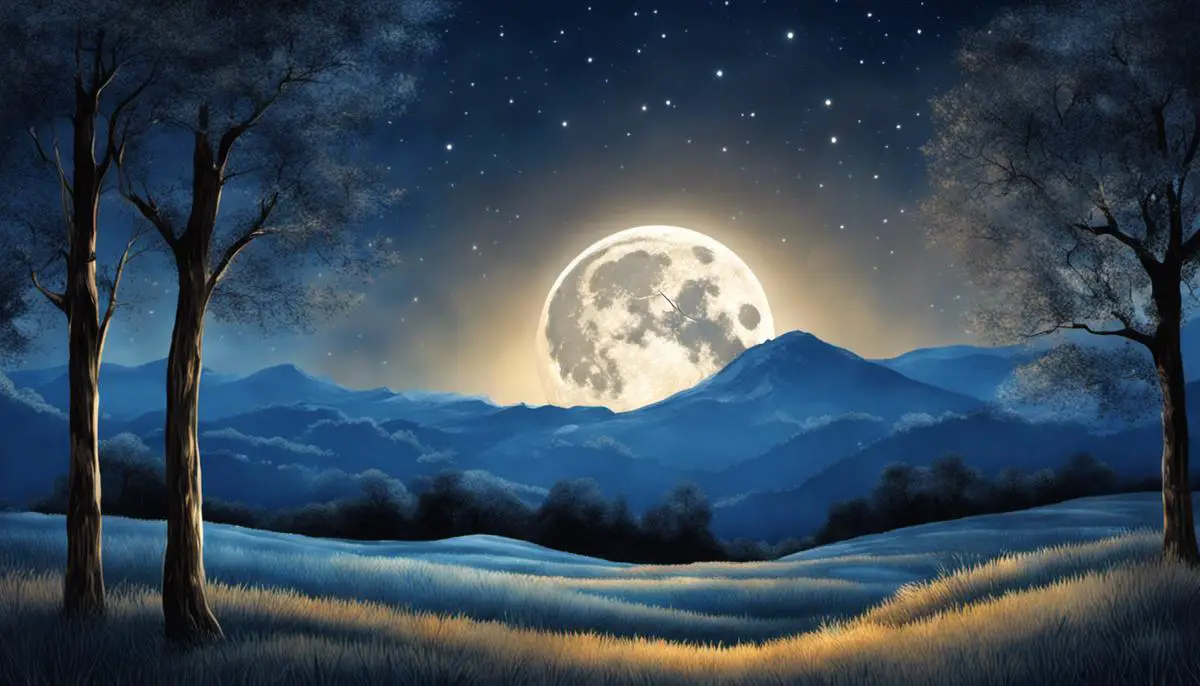
Cultural Interpretation and Myths about Blue Moon
Deciphering the Blue Moon Phenomenon
“Blue Moon” is a term defining an extra full moon that occurs within a specific period. There are two classifications of Blue Moons recognized: One, a monthly Blue Moon, is the second full moon to occur in a single calendar month. The other, a seasonal Blue Moon, is the third of four full moons in a season. These unique Moon instances tend to appear about every two to three years. As an example, the October 2023 Blue Moon falls into the category of monthly Blue Moons, being the second full moon of that particular month.
Cultural and Folklore Implications of a Blue Moon
The cultural significance of a Blue Moon varies across different regions and cultures around the world. In ancient cultures, lunar cycles were key to tracking time, and an extra full moon would have disrupted this system, leading to it being seen as a special, unusual event. In various mythologies and folklores, a Blue Moon often symbolizes change, mystery, and unexpected occurrences.
In some Eastern cultures, the moon is regarded as a symbol of immortality, longevity, and eternal love. For instance, in ancient Chinese lore, the moon is associated with yin – the feminine force – and is linked to mysticism and the divine. A Blue Moon in such cultures might be viewed as an intensification of these qualities.
In Western cultures, an extra full moon was sometimes perceived as an ominous sign. This may be echoed in the phrase “once in a blue moon,” referring to events that are rare or even bizarre.
Blue Moon Superstitions
Superstitions around Blue Moons also vary. Some people believe that Blue Moons hold increased potential for magical workings and that wishes or intentions set during a Blue Moon have special potency. Others might view the Blue Moon as a time of disruption, where things don’t function as expected.
Blue Moon in Pop Culture, Music, and Literature
“Blue Moon” has been a popular phrase in music and popular culture. The most famous instance is probably the song “Blue Moon,” written by Richard Rodgers and Lorenz Hart, which has been covered by numerous artists including Elvis Presley, The Marcels, and Rod Stewart. Its evocative lyrics and melancholic melody have made it a timeless classic.
In literature, a Blue Moon often represents a moment of change, decision, or rarity. The phrase “once in a blue moon” is widely used in both books and day-to-day conversations to signify something exceptionally rare or unlikely to happen.
In television and movies, a Blue Moon often serves as a backdrop for romantic or pivotal scenes to evoke a sense of magic, mystery, or rarity.
In conclusion, a Blue Moon, such as the one anticipated for October 2023, carries rich historic, folklore, and pop culture significance, representing a unique and intriguing lunar event.
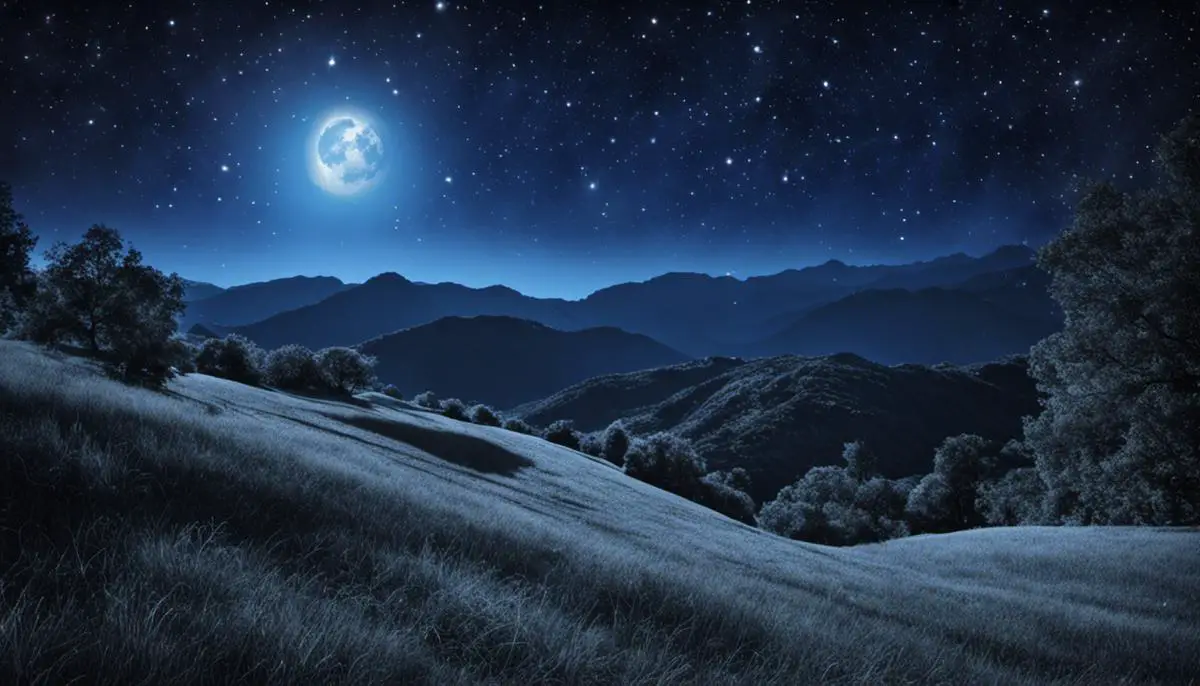
As our exploration through the engaging facets of the Blue Moon draws to an end, the profound intertwining of astronomy, culture, and time becomes increasingly evident. The Blue Moon, far from being a mere spectacle of the night, serves as a palpable reminder of our intrinsic connection to the universe and its celestial bodies. The next time the moon graces our sky in October 2023 with an additional full-faced glow, let it mesmerize not just our senses but also our cognition, narrating tales of ancient lunar charms, calendar innovations, and cosmic wonders.
![]()
